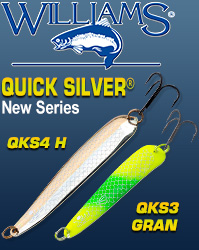Koi herpes virus likely cause of carp die-off in Rock River
MADISON – A virus that is new to Wisconsin waters and affects common carp and koi is likely to blame for two carp die-offs in Dodge County in recent days.
Department of Natural Resources officials say the koi herpes virus is not harmful to humans or other fish. However, caution is urged in handling affected carp because as they decompose, they become susceptible to multiple secondary bacterial infections that can cause illness in humans.
Laura Stremick-Thompson, a fisheries biologist serving Dodge and Jefferson counties, said DNR began investigating the first die-off on July 21 in the state and federal waters of Horicon Marsh and Lake Sinissippi. An investigation is now underway following reports from July 31 of dead and dying carp in Silver Creek, a tributary to the Rock River in Watertown approximately 42 miles downstream from the Hustisford dam.
“The public is not at risk from the koi herpes virus and from what we have seen in other states, sport fish and forage fish such as shiners have not been harmed,” said Stremick-Thompson. “However, DNR encourages use of protective clothing such as gloves in removing the dead carp due to other bacteria the fish may be hosting.”
Tissue samples from the first die-off tested positive for the koi herpes virus using a technique called polymerase chain reaction that amplifies portions of the pathogen’s unique genetic code. Department fish health specialists sent the tissues samples to Michigan State University and the U.S. Fish and Wildlife Service La Crosse Fish Health Center after observing damaged gills, sunken eyes and enlarged spleens in the fish collected from the Horicon die-off.
“We identified koi herpes virus as a possible cause of the Horicon event after finding clinical signs consistent with the disease and noting adequate dissolved oxygen levels in the water,” Stremick-Thompson said. Fish from the Silver Creek event are being sent to the La Crosse center for necropsy and testing.
Koi herpes virus caused significant carp die-offs in New York in 2005, Michigan in 2011 and in Ontario, Canada in 2007 and 2008. Onset of the virus appears to occur as water temperatures climb; water in the July die-off registered at about 73 degrees Fahrenheit.
The presence of the virus in other states has been linked to the release of ornamental fish such as domesticated koi. Wild fish that do survive an initial outbreak can become carriers and may not show signs of the disease. The virus may cause disease and mortality periodically in the future, depending on water temperatures and fish stress.
Given the dense carp population in the Rock River system, DNR biologists anticipate the disease will continue its advance in the days and weeks ahead. Stremick-Thompson said the virus is transmitted through waterborne contact with the gills and skin and it can survive outside of fish for up to seven days.
Additional carp die-offs may occur until water temperatures begin to cool with the onset of fall. Mortality rates of carp infected with koi herpes virus are greatest when water temperatures are between 71 and 79 degrees Fahrenheit. There is no treatment available to control the virus in wild fish.
Typical of fish infected with koi herpes virus, fish from the original die-off also were infected with bacterial pathogens. The bacteria are present naturally in surface water and when fish are stressed or their immune system is suppressed, the bacteria can cause systemic infections and disease.
Citizens who observe dead or dying carp are asked to contact Laura Stremick-Thompson by email via Laura.Stremickthompson@wisconsin.gov, or by phone at 920-387-7876. Koi herpes virus is a federally reportable disease and DNR officials have completed the initial notification.
FOR MORE INFORMATION CONTACT: Laura Stremick-Thompson, DNR fisheries biologist, Laura.Stremickthompson@wisconsin.gov, phone 920-387-7876; Jennifer Sereno, communications, 608-770-8084,Jennifer.Sereno@Wiconsin.gov









